Exposed Fireplace Venting as a Design Choice
Exposed fireplace venting is making a comeback in interior design. An industrial design element used to open up or minimize walls that interfere with light and/or views out of the room.
Unfortunately, the standard venting used in fireplace installation is generally available in limited lengths that require multiple mechanical joints. Not so pretty. Unsightly labeling would also be visible on standard factory vent runs.
To make venting more visually pleasing, a secondary pipe or cowling can be used to disguise factory venting. Doing this creates a more appealing aesthetic. There are multiple methods to achieve this industrial design choice.
Read on for a few interesting ideas to achieve the exposed venting look.
The Great Room
When using a fireplace as a centerpiece in the middle of a great room the vent run poses an issue. Power venting can help extend long vertical or downward vent runs, but sometimes going straight vertical is the only option.
The Small Space
An open floorplan is based on the concept of maximizing sightlines and limiting unnecessary walls. Constructing a floor to ceiling fireplace chase hinders a small space’s openness by creating a barrier to these sightlines.
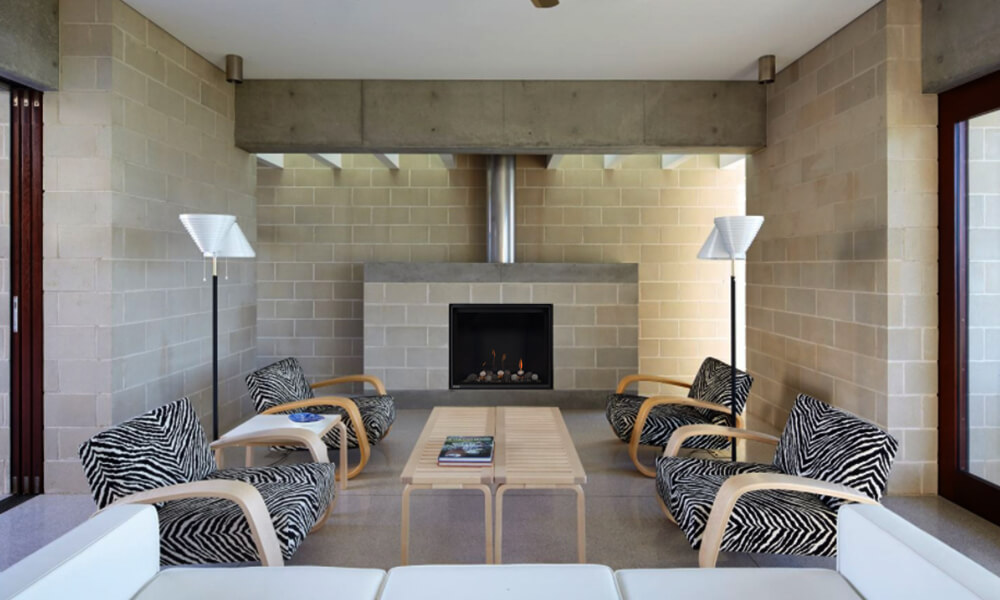
MONTIGO / DelRay DRSQ38 / Metal cowl constructed with concentric wood burning pipe
Photo Credit: Architec Smooth Range Projects
Metal Duct Cowling
Non-decorative pipe is often sealed with milpack and secured with unattractive screws. Wood burning pipe can be used as cowling to provide a cleaner finish than the bare direct vent or B vent. This is especially effective in spaces where a modern industrial look is desired.
The Phenom see through fireplace below shows standard Montigo rigid pipe enhanced with black high temperature paint.
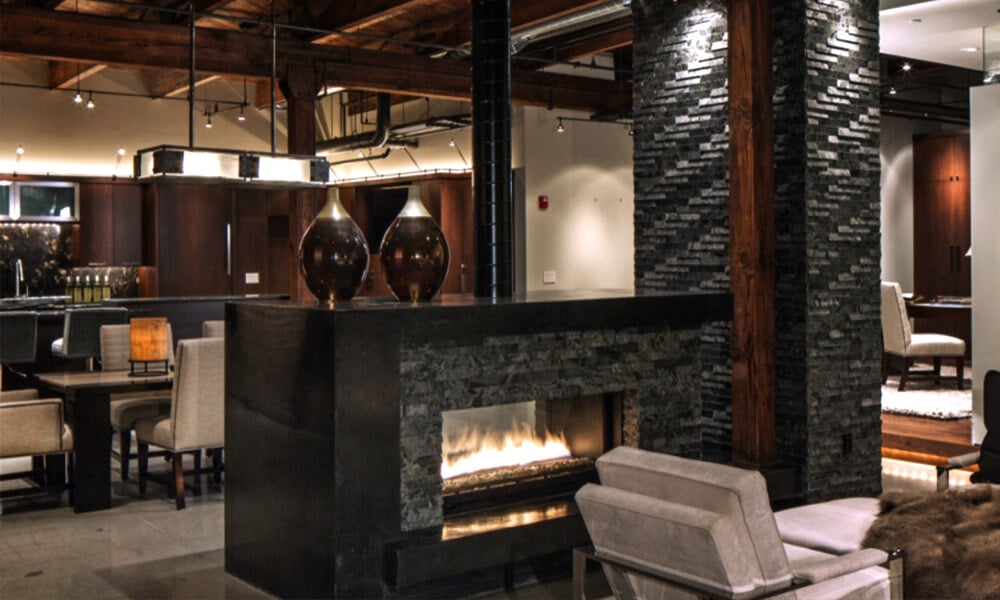
MONTIGO / Phenom L42 / Black metal cowl constructed with concentric wood burning pipe
Photo Credit: Eurowood Cabinets, Inc.
As an alternative to pipe cowling, you can place a rolled metal cowl around the venting to disguise it. Position the visible seam in the finished cowl out of sightlines.
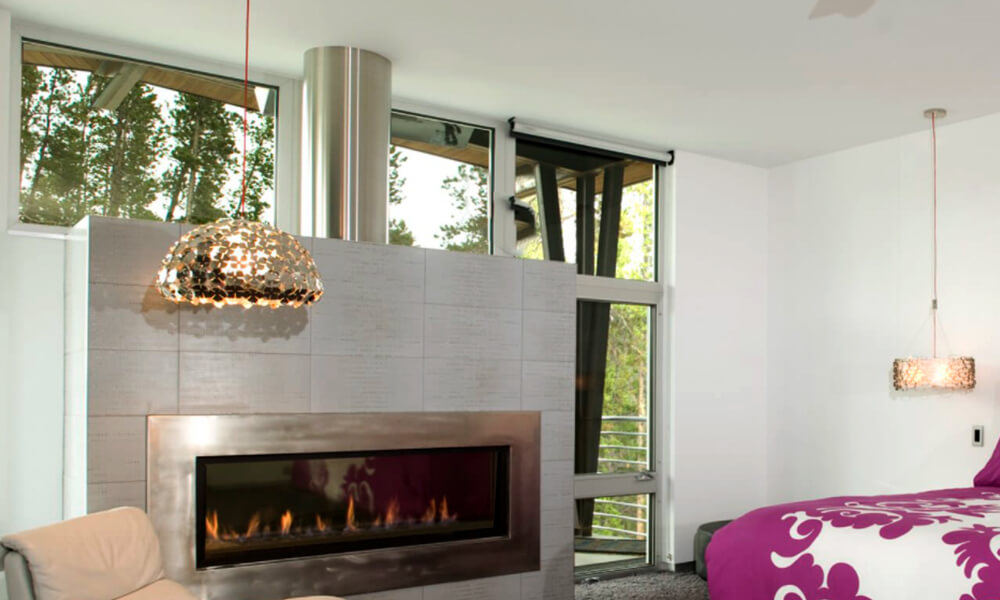
MONTIGO / Phenom P52 / Stainless steel cowl constructed from pipe
Finished Cowling
Instead of pulling the fireplace chase finish all the way to the ceiling, architects and designers may prefer to leave the area above the fireplace as clear as possible to help open up a space.
Closing off the chase (with optional ventilation) and running the vent through a column, the vent run leaves the upper half of the room clear. Be mindful to maintain clearances from vent to cowl.
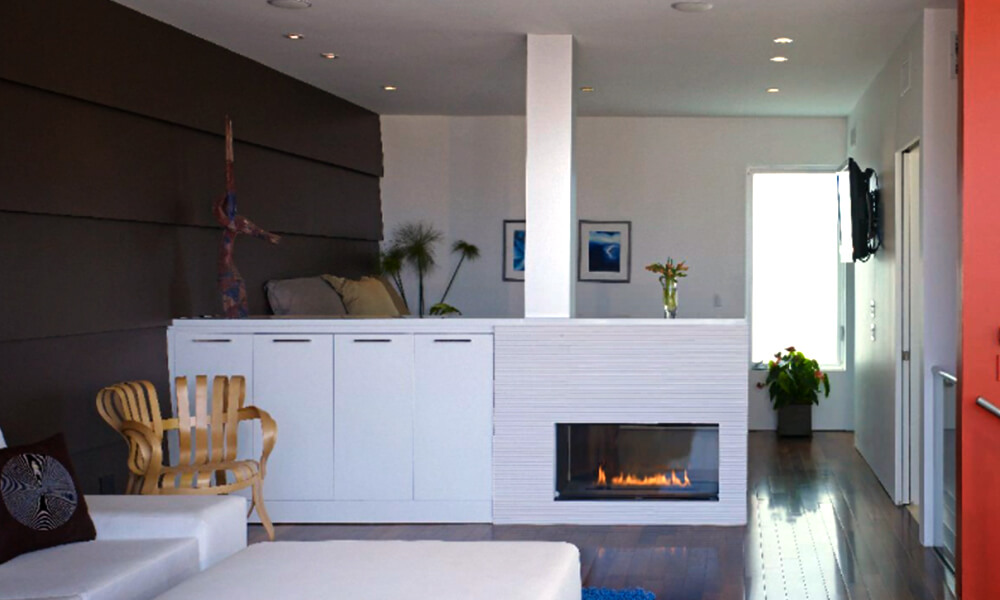
MONTIGO / Phenom L38 / Cowl constructed from hardy board
Photo Credit: Make Architecture, 39th Street
Stylized Design Elements
The wood burning pipe on top of an Exemplar R324STIO ventless fireplace shown below is strictly a design element.
HGTV’s Emily Henderson features the Exemplar R324STIO in the Portland House and in her latest Mountain House project because she really loves the indoor/outdoor nature of the fireplace. In the Scandinavian cabin themed Mountain House, she added a purely decorative custom steel cladding to make her “Scandi dreams” come true.
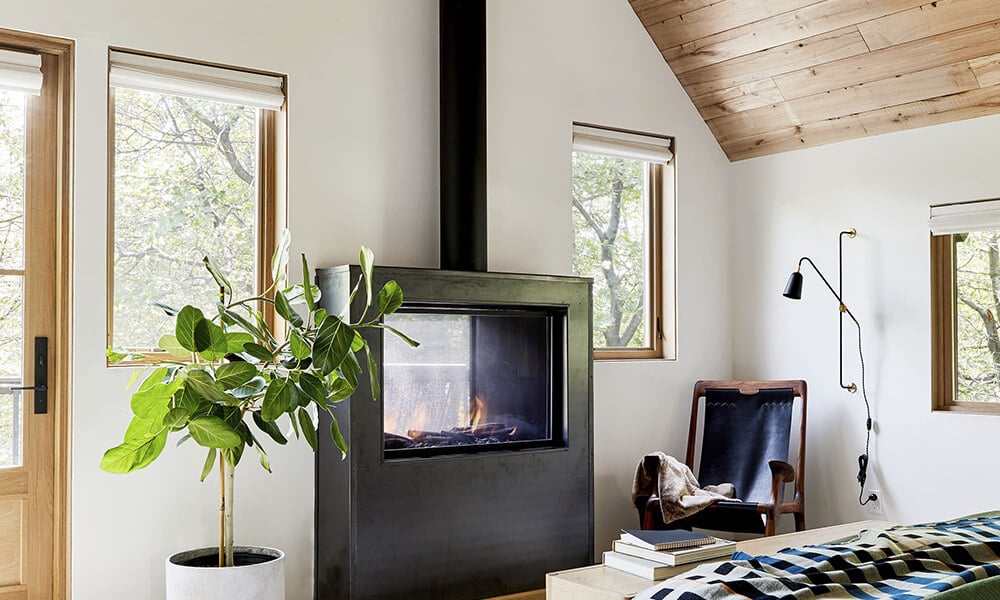
MONTIGO / Exemplar R324STIO / Faux pipe constructed from wood burning pipe
Photo Credit: Style by Emily Henderson
The metal cage shown below is both beautiful and a functional safety feature. Power vented pipe reaches dangerously high temperatures, so having it within arm’s reach in a public space can pose a major liability. Why not turn it into a dramatic feature!
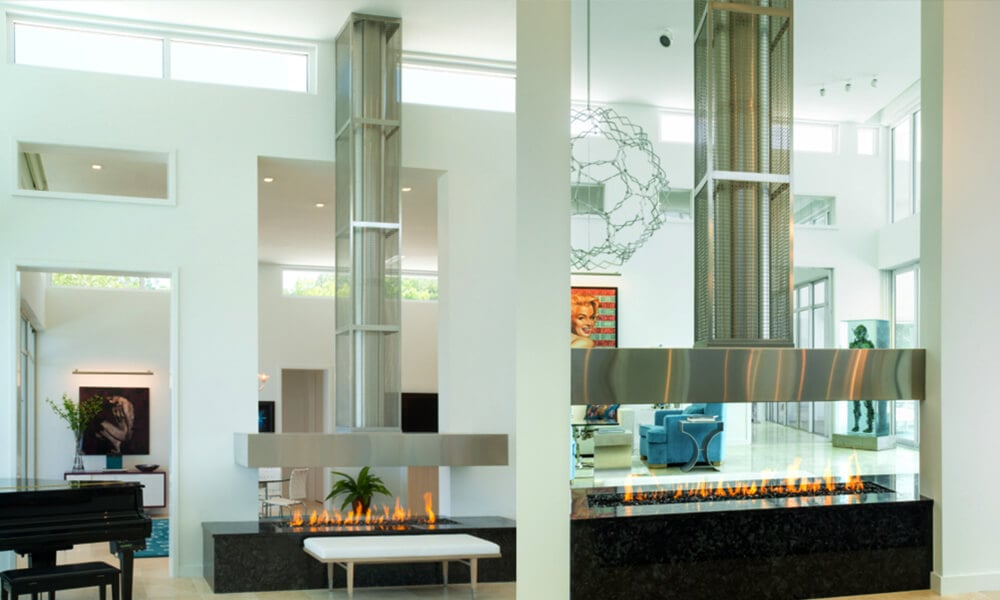
This isn’t a Montigo fireplace but we love the creative venting design!
Check out more unique Montigo installs on our Houzz ideas page.